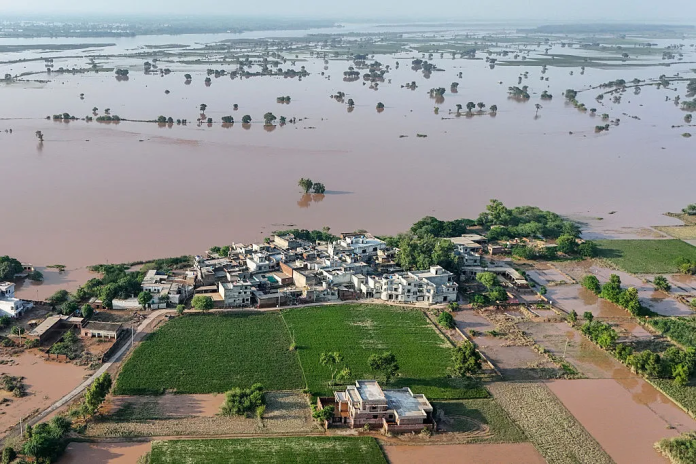Takeaways by Bloomberg
• The deadly flooding in Pakistan damaged the country’s rice and cotton sectors, according to Finance Minister Muhammad Aurangzeb.
• The flooding will likely affect economic growth, with Aurangzeb predicting GDP growth of between 3.5 to 4%, and the IMF estimating growth of between 3.25% and 3.5%.
• Pakistan plans to issue its inaugural tranche of yuan-denominated debt, known as Panda bonds, by late November or early December, to diversify the country’s funding channels.
The deadly flooding that swept Pakistan this summer squeezed the country’s agricultural sector, likely delivering a blow to economic growth this year, Finance Minister Muhammad Aurangzeb said.
Initial assessments showed damage to the country’s rice and cotton sectors, Aurangzeb said during an interview with Bloomberg News in Washington on Thursday. He said more detailed damage assessments will take place in the coming months.
“This will put in a dent to our GDP growth number,” he said. “My own view is it will still be north of 3.5%, early days, but anywhere between 3.5 to 4.”
Heavy monsoon rains beginning in late June devastated farmland in Pakistan, hitting the country’s rice-growing region of Punjab especially hard. The rains and resulting floods displaced more than 4 million people and killed about 900. Prior to the flooding, the Pakistani government projected economic growth of 4.2% for the fiscal year ending next June.
“Climate change for us is not academic,” he said. “We are living it, and the recent floods actually are a reflection of that.”
Pakistan’s economy has been stabilizing following a near-default on government debt two years ago. The South Asian nation is set to receive about $1.2 billion in loans from the International Monetary Fund after signing off on a staff-level agreement with the IMF, following a successful review of its $7 billion loan program.
The third loan installment is expected to help bolster the country’s $407 billion economy, which has stabilized after it narrowly avoided a default on government debt two years ago.
The IMF estimates the country’s economy will grow between 3.25% and 3.5% in the fiscal year to June despite the destructive monsoon rains. Pakistan predicts inflation may cross the upper bound of its 5%-7% target range this year, cooling from a record 38% two years ago.
Meanwhile, Pakistan and the US have moved to rebuild military and economic ties after years of strain. Economic links have grown with a trade deal that levied a 19% tariff on Pakistani goods, lower than regional peers and well below the 50% tariff on rival India.
Panda Bond
The finance minister also said Pakistan planned to issue its inaugural tranche of yuan-denominated debt — known as Panda bonds — by late November or early December. The $250 million issue is key to diversifying the country’s funding channels, he said.

















